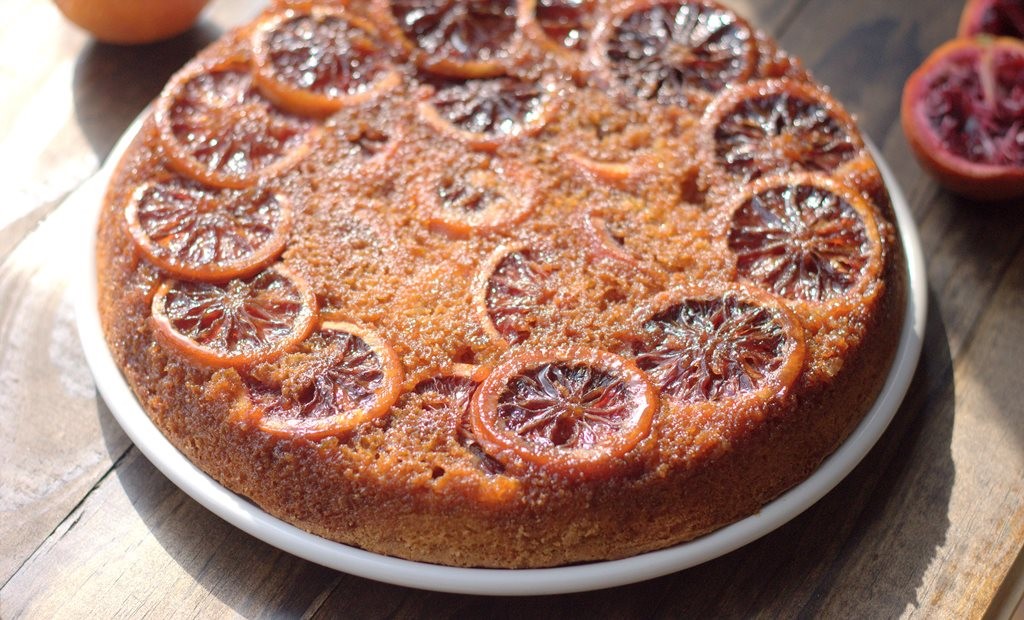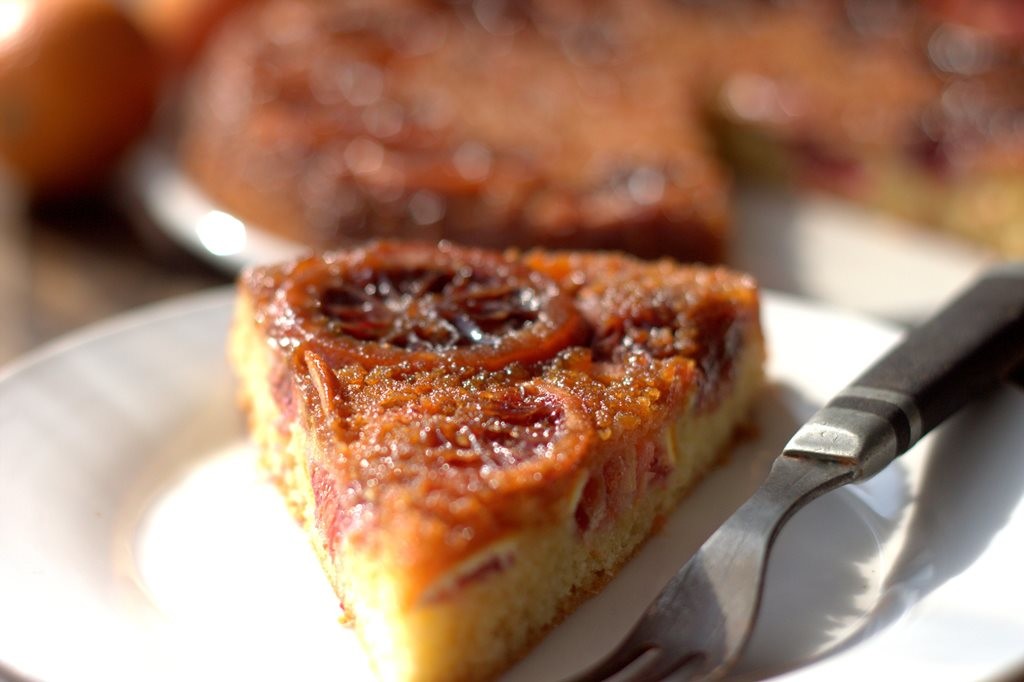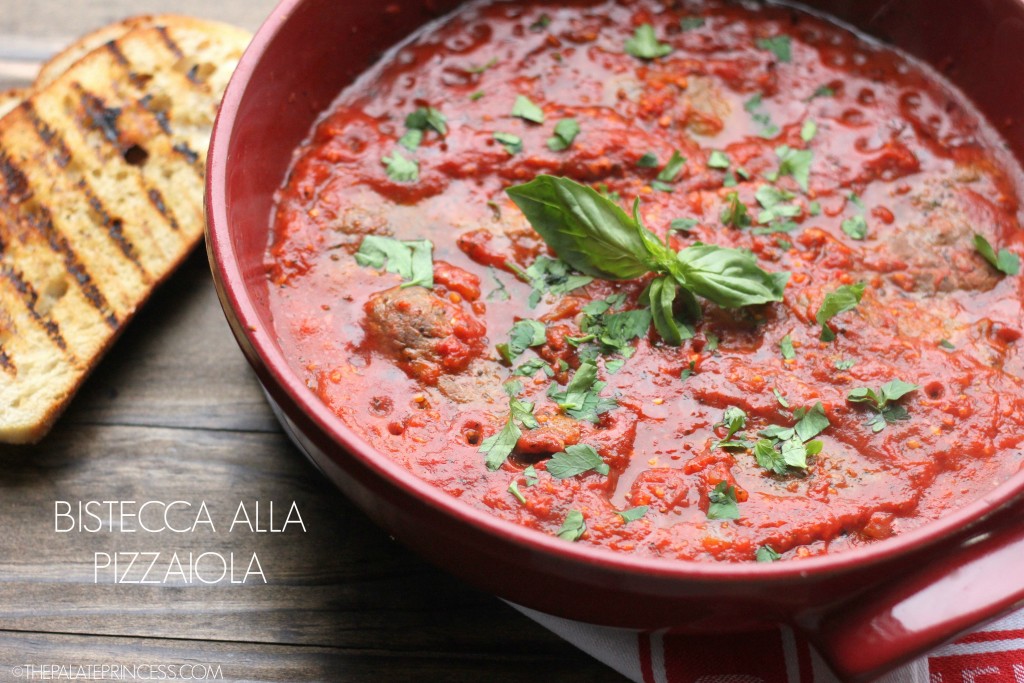When you hear upside down cake, what is typically your first thought? Pineapple upside down cake, right? You’re not alone–most of us are guilty of thinking of the über-popular confection when it comes to inverted cakes, but did you know that you can add just about any kind of fruit to an upside down cake? Seriously, it’s true and the results are delicious.
For those of us who live on the east coast, we’re in the final (hopefully) throes of winter and, believe me, winter’s not going quietly. While the temperature may be wreaking havoc on our moods, it’s a great time to make the most of what remains of the winter produce harvest. Enter blood oranges.
Blood oranges are typically in season from December to May. Some may not be familiar with the darker-fleshed, sweeter cousin of the traditional orange; its near-crimson peel tells the story of what’s inside. The fruit gets its name from the fact that the sweet inner flesh is a deep, purplish color and has a more complex flavor that a regular orange. It’s this combination of unique flavor and look that makes the blood orange perfect for this dish. The recipe calls for the making of a caramel and the addition of polenta for a bit of textural interest–a wonderful twist on a customary upside down cake.
**Note: Sometimes blood oranges are not readily available at traditional grocery stores. I found mine at Trader Joe’s.**
UPSIDE DOWN POLENTA BLOOD ORANGE CAKE (adapted from Bon Appétit)
Serves 8
Ingredients:
7 tablespoons sugar, divided, plus 3/4 cup sugar
3 tablespoons water
8 tablespoons (1 stick) unsalted butter, room temperature, divided
3 unpeeled small to medium blood oranges
3/4 cup plus 3 tablespoons unbleached all purpose flour
3 tablespoons polenta or coarse yellow cornmeal (preferably stone-ground)
1 1/2 teaspoons baking powder
1/4 teaspoon coarse kosher salt
3/4 teaspoon good-quality vanilla extract
2 large eggs, separated
6 tablespoons whole milk (I used evaporated milk because it’s what I had in the refrigerator)
Directions:
Position rack in center of oven and preheat to 350°F. Combine 6 tablespoons sugar and 3 tablespoons water in 10-inch-diameter ovenproof skillet with 8-inch-diameter bottom and 2 1/2-inch-high sides. Stir over medium heat until sugar dissolves. Increase heat and boil without stirring until syrup is golden amber (not dark amber), occasionally brushing down sides of skillet with wet pastry brush and swirling skillet, about 4 minutes. Remove skillet from heat and whisk 2 tablespoons butter into caramel. Set aside.
Cut off both rounded ends of each orange so that ends are even and flat. Using sharp knife, cut oranges into 1/16- to 1/8-inch-thick rounds. Remove and discard any seeds. Arrange orange slices, overlapping slightly, in concentric circles atop caramel in bottom of skillet.
Whisk flour, polenta, baking powder, and coarse kosher salt in medium bowl to blend. Using electric mixer, beat 3/4 cup sugar, remaining 6 tablespoons room-temperature butter, and vanilla in another medium bowl until light and fluffy. Add egg yolks 1 at a time, beating well after each addition. Add flour mixture in 3 additions alternately with milk in 2 additions, beating batter just until incorporated.
Using clean dry beaters, beat egg whites in large bowl until soft peaks form. Add remaining 1 tablespoon sugar and beat until stiff but not dry. Fold 1/3 of egg whites into batter to lighten, then fold in remaining egg whites in 2 additions. Drop batter by large spoonsful atop orange slices in skillet, then spread evenly.
Bake cake until tester inserted into center comes out clean, about 45 minutes. Cool cake in skillet 10 minutes. Run small knife around cake to loosen. Place platter atop skillet. Using oven mitts, hold platter and skillet firmly together and invert, allowing cake to settle onto platter. Rearrange any orange slices that may have become dislodged. Cool cake completely at room temperature.
 Now this is the way to end a meal.
Now this is the way to end a meal.
 Although this cake is a welcomed after-dinner dessert, it’s also great for breakfast alongside a cup of coffee or tea.
Although this cake is a welcomed after-dinner dessert, it’s also great for breakfast alongside a cup of coffee or tea.












